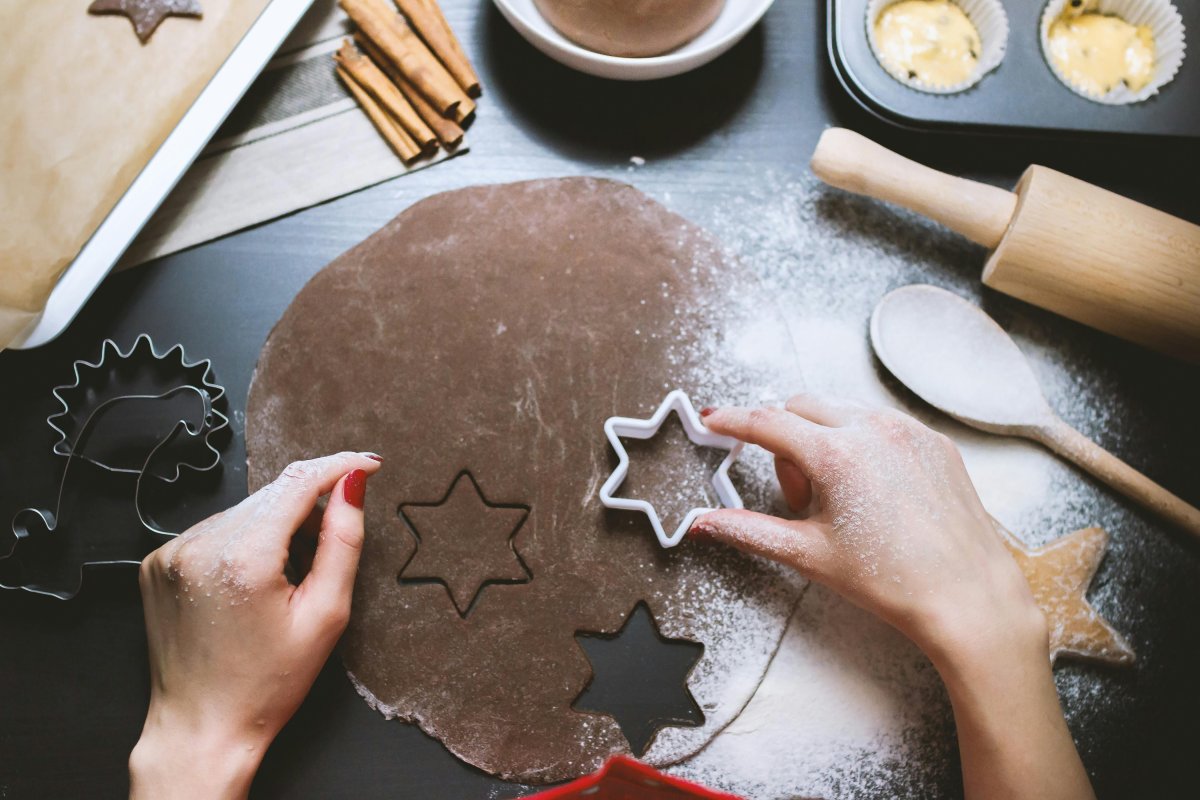
You love baking—whether it’s gooey brownies, golden muffins, or cookies that vanish before they’ve cooled. And chances are, one of your most trusted kitchen tools has been right there with you through it all.
That baking essential tucked in your cupboard has likely seen countless batches of lamingtons, fairy cakes, and banana bread over the years. It has earned its place in the hearts of home bakers—and for good reason. It’s lightweight, non-stick, easy to store, and saves you from buttering every single mold.
But as its popularity rises, so do the questions. Could this beloved baking companion be doing more than you bargained for?
Recent research suggests there may be something unexpected lurking in those convenient kitchen helpers—and it’s worth a closer look before your next batch goes in the oven.
What the researchers discovered
A recent study published in the Journal of Hazardous Materials examined how much exposure home bakers might face from certain chemical compounds found in silicone bakeware.
Researchers tested 25 products commonly available in Canada, simulating typical baking conditions: an hour in the oven at 177°C.
What they found raised eyebrows: measurable levels of cyclic siloxanes, a group of substances known for their potential to migrate out of silicone materials, ranged from 680 to a whopping 4,300 micrograms per gram of silicone.
The study highlights the importance of understanding what’s released during high-heat cooking and how it might affect long-term exposure.
Rather than simply analyzing the material, researchers set out to understand how it behaves during real-world baking.
By simulating typical oven use, they discovered that siloxanes—chemical compounds linked to silicone—can migrate into food-like substances and release into the air. On average, 105 micrograms per gram entered the food simulants, while airborne levels peaked at 646 micrograms per cubic meter during a one-hour bake.
These concentrations dropped quickly once baking ended, but the study underscores a key point: silicone bakeware may be a quiet contributor to everyday chemical exposure in home kitchens.
One of the more intriguing discoveries was how several everyday factors—like the shape of the bakeware, how much surface area was exposed, and the presence of fats—played a role in how much siloxane was released during baking.
What’s reassuring is that the emissions didn’t stay constant. With repeated use, the amount of siloxane released dropped significantly, suggesting that these compounds may gradually wear off.
In fact, after just three baking sessions, researchers observed a dramatic 95% decrease in emissions, pointing to a possible “break-in” period for silicone bakeware.
Also read: Could Your Favorite Spatula Be Toxic? The Shocking Truth You Need to Know!
The health concerns explained
So what exactly are siloxanes, and why should you care?
Siloxanes are a group of silicone-based compounds found in a wide range of everyday items—from personal care products like lotions, shampoos, and deodorants to household staples such as sunscreen and non-stick baking gear. Their versatility and smooth texture make them popular across industries, but their widespread use also raises questions about long-term exposure in daily routines.
This isn’t just a hypothetical worry. Some types of siloxanes—specifically compounds like D4 and D5—have been linked to a range of health concerns in scientific studies.
These include potential disruptions to hormone function, impacts on fertility, and risks to both reproductive and immune systems. There’s also emerging evidence suggesting they may influence neurotransmitter activity, raising questions about long-term exposure in everyday settings like the kitchen.
What are the most concerning siloxanes?
D4, D5, and D6 are the most studied cyclic siloxanes. Research has linked them to hormone disruption, liver problems, and reproductive issues.
The European Chemicals Agency added D4, D5, and D6 to their list of Substances of Very High Concern in 2018.
When it comes to exposure, little ones may be getting more than their fair share, simply because of their size.
On a per-body-weight basis, research suggests that young children are more likely to absorb higher levels of certain compounds during baking, both through the food they eat and the air they breathe.
This is especially worth noting for grandparents and caregivers who love to bake with the kids—those cherished moments in the kitchen might come with invisible extras worth understanding.
Expert perspective: don't panic just yet
Before you rush to clear out your kitchen drawers, it’s worth pausing to hear from the experts.
Dr. Kelly Johnson-Arbor, a medical toxicologist at MedStar Health, encourages a thoughtful approach to recent findings.
While the research raises valid questions, she notes that the methods used, and the current gaps in data on how siloxanes affect human health, mean we should interpret the results with care. In other words, concern is understandable, but panic isn’t necessary.
Food safety specialists have noted that the testing setup used in the study doesn’t fully reflect how silicone bakeware is typically used at home. Some experiments involved powdered silicone rather than intact bakeware, and baking was done in a toaster oven within a standard-sized kitchen.
To measure chemical release, researchers also used a sand-and-oil extraction technique that’s considered more aggressive than everyday cooking conditions. These choices may have influenced the results, making it important to interpret the findings in context.
In 2023, Health Canada reviewed the available data on siloxanes and concluded that, based on current evidence, these compounds do not pose a risk to human health or the environment.
However, newer studies continue to add layers of insight—especially around how these substances behave during everyday use. While the overall safety profile remains under review, emerging research helps inform future assessments and guide more nuanced conversations about long-term exposure.
What this means for your kitchen
There’s a reassuring note tucked into the findings: the more you use silicone bakeware, the less it seems to release. Over time and with repeated baking, the migration of siloxanes into food and air drops significantly—suggesting that these compounds gradually diminish with use.
It’s a reminder that while initial exposure may be higher, regular baking could help reduce the risk as the material settles into its long-term behavior.
So if you've been using your silicone molds for a while, they're likely releasing far fewer chemicals now than when they were new.
Tried-and-true alternatives that still work
If you're thinking about swapping out your silicone bakeware, there are plenty of reliable options to consider.
Materials like ceramic, stainless steel, cast iron, carbon steel, glass, and porcelain enamel have stood the test of time, not just for their performance in the kitchen, but also for their visual charm and safety profile. These classics offer a reassuring blend of durability and design, making them solid choices for everyday baking.
While they might require a bit more preparation—a light greasing or lining with baking paper—they've been serving bakers well for generations.
Cast iron stands out as a kitchen staple that truly earns its keep. With proper care, this durable material can outlast generations, making it a favorite among home cooks and collectors alike.
For those who prefer less upkeep, enamel-coated cast iron offers a practical twist—the glass-like finish makes cleaning easier and eliminates the need for routine seasoning, all while retaining the heat-holding power cast iron is known for.
Glass bakeware also earned its place in the spotlight for good reason. It heats evenly, resists staining, and doesn’t react with acidic foods, making it a dependable choice for everything from casseroles to citrusy desserts.
For those seeking even more versatility, modern vitroceramic cookware blends the durability of ceramic with the thermal resilience of glass, allowing it to handle sudden temperature shifts with ease.
Did you know?
The term “siloxane” comes from silicon, oxygen, and alkane, reflecting the chemical structure of these compounds. They're not just in bakeware; they're also used in waterproof coatings, medical devices, and even some cosmetics you might use daily.
The bigger picture
This study adds another layer to what we’re learning about the potential health impacts of common kitchen tools. The researchers emphasized that their findings point to a pressing need for more in-depth studies on siloxane toxicity—especially to better inform future safety evaluations and regulatory decisions.
It’s important to note that ceramic cookware, especially the modern, nonstick kind, is a relatively recent addition to the kitchen. While it’s often marketed as a safer alternative, detailed information about its long-term safety and manufacturing processes remains limited.
Typically, these pans are made by coating a metal base with a ceramic-like layer derived from natural materials such as sand, giving them a smooth, glossy finish.
As awareness grows around chemical safety, especially concerns tied to PFAS and other long-lasting compounds, manufacturers are responding with safer alternatives. Many are expanding their product lines to include ceramic-coated options alongside trusted materials like stainless steel, carbon steel, and cast iron—offering home cooks a reassuring blend of performance and peace of mind.
What's your experience been with different types of bakeware? Have you noticed differences in how your baked goods turn out with various materials? We'd love to hear about your favorite tried-and-tested baking essentials in the comments below.







